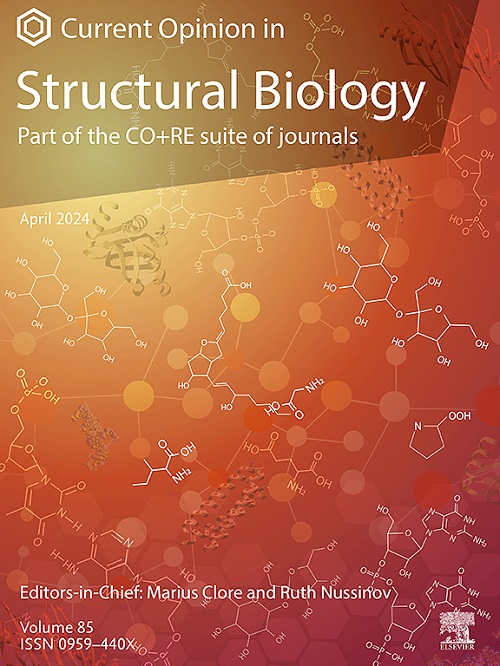蛋白质- rna相互作用的进化
IF 6.1
2区 生物学
Q1 BIOCHEMISTRY & MOLECULAR BIOLOGY
引用次数: 0
摘要
自地球历史的冥古宙-太古代以来,肽/蛋白质和RNA经历了一个复杂的进化轨迹。这些分子起源于简单的单体单位,在各种生物化学和生物物理限制下非生物地进化成具有功能的生物分子,促成了第一批活细胞的出现。在这些细胞内,它们之间的相互作用可以通过达尔文选择进化。在这篇综述中,我们研究了目前对蛋白质- rna相互作用如何在益生元条件下出现并发展成今天标志性的生物分子机器(如核糖体)的理解。特别强调的是早期蛋白质- rna复合物的物理化学相互作用的类型。特别关注有限的益生元氨基酸库如何影响这些相互作用及其在驱动原细胞环境中的空间组织和区隔化中的作用。本文章由计算机程序翻译,如有差异,请以英文原文为准。
Evolution of protein-RNA interactions
Since the Hadean–Eoarchaean era of Earth’s history, peptides/proteins and RNA have undergone a complex evolutionary trajectory. Originating from simple monomeric units, these molecules evolved abiotically under various biochemical and biophysical constraints into functional biomolecules that contributed to the emergence of the first living cells. Within these cells, their interactions could then evolve through Darwinian selection. In this review, we examine current understanding of how protein–RNA interactions emerged under prebiotic conditions and developed into today’s iconic biomolecular machines such as the ribosome. Particular emphasis is placed on the types of physicochemical interactions accessible to early protein–RNA complexes. Special attention is given to how the limited prebiotic amino acid repertoire influenced these interactions and their roles in driving spatial organization and compartmentalization in protocellular environments.
求助全文
通过发布文献求助,成功后即可免费获取论文全文。
去求助
来源期刊

Current opinion in structural biology
生物-生化与分子生物学
CiteScore
12.20
自引率
2.90%
发文量
179
审稿时长
6-12 weeks
期刊介绍:
Current Opinion in Structural Biology (COSB) aims to stimulate scientifically grounded, interdisciplinary, multi-scale debate and exchange of ideas. It contains polished, concise and timely reviews and opinions, with particular emphasis on those articles published in the past two years. In addition to describing recent trends, the authors are encouraged to give their subjective opinion of the topics discussed.
In COSB, we help the reader by providing in a systematic manner:
1. The views of experts on current advances in their field in a clear and readable form.
2. Evaluations of the most interesting papers, annotated by experts, from the great wealth of original publications.
[...]
The subject of Structural Biology is divided into twelve themed sections, each of which is reviewed once a year. Each issue contains two sections, and the amount of space devoted to each section is related to its importance.
-Folding and Binding-
Nucleic acids and their protein complexes-
Macromolecular Machines-
Theory and Simulation-
Sequences and Topology-
New constructs and expression of proteins-
Membranes-
Engineering and Design-
Carbohydrate-protein interactions and glycosylation-
Biophysical and molecular biological methods-
Multi-protein assemblies in signalling-
Catalysis and Regulation
 求助内容:
求助内容: 应助结果提醒方式:
应助结果提醒方式:


